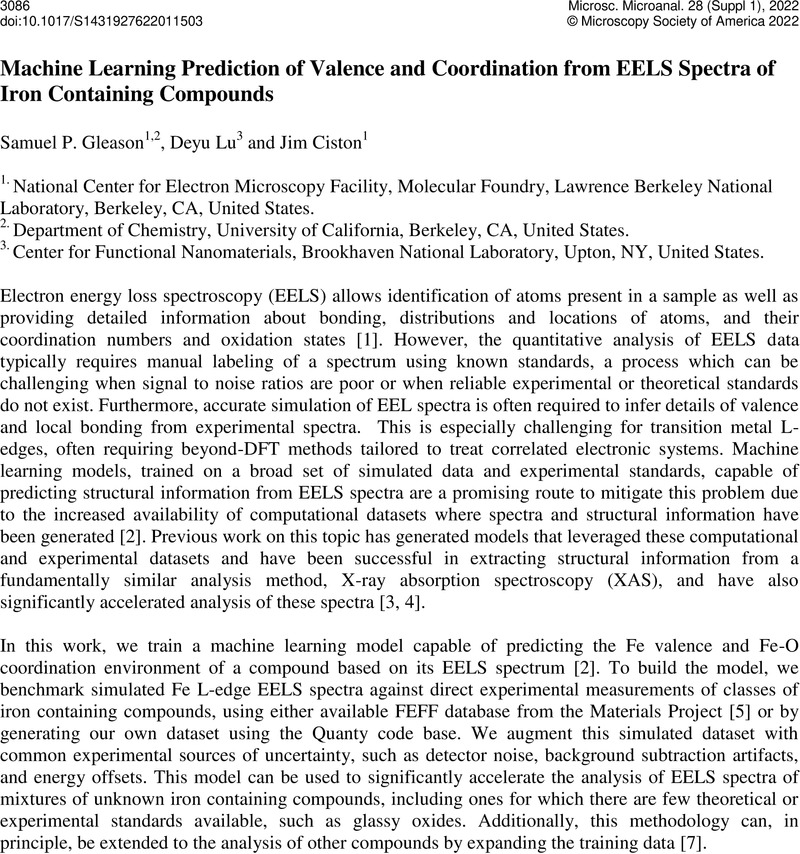No CrossRef data available.
Article contents
Machine Learning Prediction of Valence and Coordination from EELS Spectra of Iron Containing Compounds
Published online by Cambridge University Press: 22 July 2022
Abstract
An abstract is not available for this content so a preview has been provided. As you have access to this content, a full PDF is available via the ‘Save PDF’ action button.

- Type
- Artificial Intelligence, Instrument Automation, And High-dimensional Data Analytics for Microscopy and Microanalysis
- Information
- Copyright
- Copyright © Microscopy Society of America 2022
References
Reyes-Lillo, SE et al., Phys. Rev. Materials 3 (2019), p. 033604.10.1103/PhysRevMaterials.3.030601CrossRefGoogle Scholar
Timoshenko, J et al., J. Phys. Chem. Lett. 8 (2017) p. 5091.10.1021/acs.jpclett.7b02364CrossRefGoogle Scholar
Jin, Y, Xu, H and Datye, AK, Microscopy and Microanalysis 12 (2006) p. 124.10.1017/S1431927606060144CrossRefGoogle Scholar
This work was primarily funded by the US Department of Energy, Office of Science, Office of Basic Energy Sciences in the program “4D Camera Distillery: From Massive Electron Microscopy Scattering Data to Useful Information with AI/ML." Electron Microscopy use at the Molecular Foundry was supported by the Office of Science, Office of Basic Energy Sciences, of the US Department of Energy under Contract No. DE-AC02-05CH11231. This research used resources of the Center for Functional Nanomaterials (CFN), which is a U.S. Department of Energy Office of Science User Facility, at Brookhaven National Laboratory under Contract No. DE-SC0012704.Google Scholar



